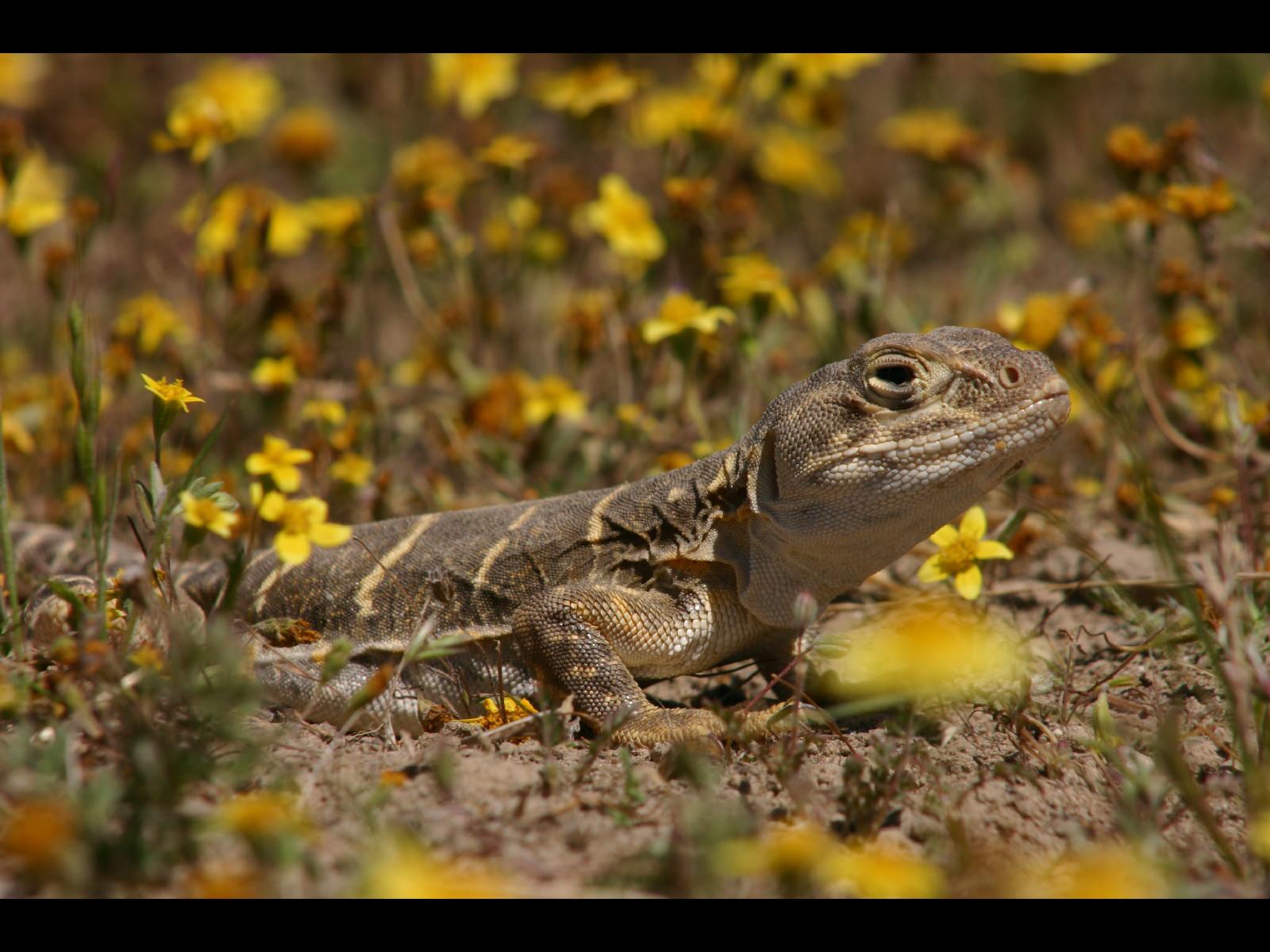Blunt-nosed leopard lizard (Gambelia silus) is endemic to the San Joaquin Valley of central California (Stejneger 1893; Smith 1946; Montanucci 1965, 1970; Tollestrup 1979a). This species typically inhabits open, sparsely vegetated areas of low relief on the San Joaquin Valley floor and in the surrounding foothills (Smith 1946; Montanucci 1965). Holland (1986) described the vegetative communities that blunt-nosed leopard lizards are most commonly found in as Nonnative Grassland and Valley Sink Scrub communities. Other suitable habitat types on the Valley floor for this species include Valley Needlegrass Grassland (Holland 1986), Alkali Playa (Holland 1986), and Atriplex Grassland (Tollestrup 1976).
Blunt-nosed leopard lizards use small rodent burrows for shelter from predators and
temperature extremes (Tollestrup 1979b). Burrows are usually abandoned ground squirrel (Spermophilus beecheyi) tunnels, or occupied or abandoned kangaroo rat tunnels (Dipodomys spp.) (Montanucci 1965). Each lizard uses several burrows without preference, but will avoid those occupied by predators or other leopard lizards. Montanucci (1965) found that in areas of low mammal burrow density, lizards would construct shallow, simple tunnels in earth berms or under rocks. Reference
Federal Status
ENDANGERED
- Recovery Plan for Upland Species of the San Joaquin Valley – 1998
- 5-Year Review – 2010
- USFWS Species Account
- No Critical Habitat Designated
California Status
ENDANGERED and FULLY PROTECTED
Survey Protocol
Home Range
Map Data Source: California Wildlife Habitat Relationship (CWHR)
Photo credits: header (cropped) – Gavin O’leary CDFW on Flickr , featured image – Bureau of Land Management on Flickr
